ROSS SEA ODYSSEY
__________________
__________________
| Day | Place | Highlights |
|---|---|---|
| Days 1 - 2 | Dunedin, New Zealand | Pre-voyage hotel night, embark on Day 2! |
| Day 3 | At Sea | Meet your fellow travellers, learn about the fascinating places you'll be visiting |
| Days 4 - 6 | New Zealand's Subantarctic Islands | Great cultural and spiritual significance, unique endemic species such as the yellow-eyed penguin |
| Days 7 - 10 | At Sea | Attend presentations and film showings, or meet with your new travel mates |
| Days 11 - 17 | Victoria Land Coast and Ross Sea | Globally significant wildlife sanctuary, uniquely adapted Antarctic species |
| Days 18 - 20 | At Sea | Keep watch for albatross which may follow the ship, indulge in some rest and relaxation |
| Days 21 - 22 | Macquarie Island | Home to 3.5 million breeding seabirds, including four species of penguin |
| Days 23 - 24 | At Sea | Reflect on the experiences of the past few weeks |
| Day 25 | Dunedin, New Zealand | Farewell your expedition team and fellow passengers, disembark |

Setting sail in 2025, the Douglas Mawson is a new state-of-the-art ship and the last in a line of purpose-built vessels that have redefined small ship expedition cruising. Named after the legendary Australian geologist and explorer, this new small ship embodies Mawson’s pioneering spirit and is designed for global discovery. The Douglas Mawson features a host of amenities to help you connect with like-minded travellers and elevate your time onboard your floating base camp for adventure. After a long day of exploring, head to the back deck to swim in the heated outdoor swimming pool, find a sun bed to read on, or soak in one of two Jacuzzis. Work up a sweat in the gym before unwinding in the sauna, resolve to learn something new in the Citizen Science Centre, then enjoy a delicious meal with new and old friends in one of two restaurants. Or, with multiple observation areas throughout the ship, simply relax in comfort while you keep watch for wildlife or incredible landscapes that unfold before you.
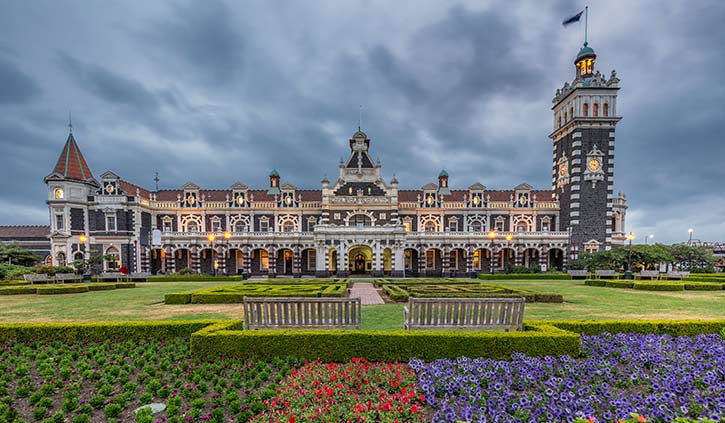
Arrive in Dunedin, where you will be met by a representative of Aurora Expeditions and transferred with your fellow expeditioners to your assigned pre-voyage hotel.
That evening, enjoy light refreshments as you meet your fellow expeditioners at a Welcome Reception and Pre-Embarkation Briefing. Afterwards, enjoy your evening in New Zealand’s southernmost city. You may like to indulge in a meal at one of Dunedin’s fine restaurants, or perhaps enjoy a leisurely stroll along the picturesque Otago harbour.
The following morning, enjoy breakfast and checkout, before spending some time at leisure exploring Hobart. Afterwards, settle into your beautifully appointed cabin and discover the many public spaces designed with your comfort in mind. The luxurious vessel is yours to explore! Join your expedition team on deck before tucking into a delicious dinner, and toast to the voyage ahead.
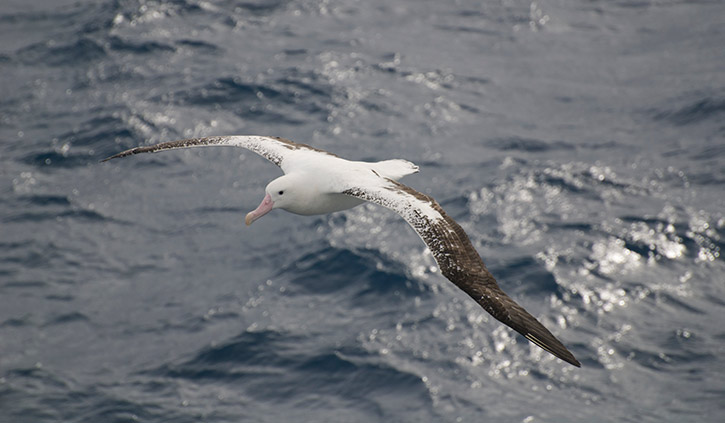
On an expedition such as this, the journey is as significant as the destination. Sea days are a wonderful opportunity to relax, meet your fellow travellers and learn about the history, environment and local wildlife in this fascinating corner of the globe.
As you acclimatise to life on board, your expedition team is available to answer any questions you may have and offer pro-tips on photography and birdwatching. With decades of collective experience in the region, they love to share their expertise and enthusiasm with fellow travellers. Join them in the lecture room for entertaining talks and presentations to enrich your understanding of the wildlife, landscapes and historic sites we hope to encounter.
You may like to pamper yourself with a sauna, a visit to the Wellness Centre, or work out at the onboard gym. While away the hours spotting seabirds on deck, curl up with a book in our well-equipped polar library, or chat with your fellow expeditioners at the bar.

Scattered across the Southern Ocean 465 kilometers (300 miles) south of New Zealand, these islands have been visited by Polynesian and Māori navigators for centuries, and are of great cultural and spiritual significance to Ngāi Tahu, the indigenous peoples of New Zealand’s South Island. Here you have the opportunity to witness a finely tuned subantarctic ecosystem populated by unique endemic species such as the yellow-eyed penguin (hoiho) and Campbell mollymawk.
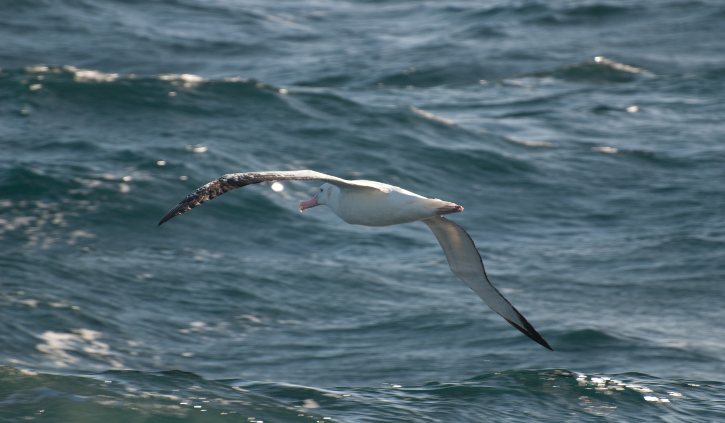
As Campbell Island slips over the horizon, keep watch for Campbell, Salvins and white-capped albatross, which may follow the ship to bid us farewell as we continue south.
Close observers may notice a subtle change in the character of the sea as we cross the Antarctic Convergence. Beyond this belt where the waters of the north and south mix, the sea surface temperature drops by about 4°C , signalling our entry into the Antarctic. This transition zone is known for its nutrient-rich waters, so keep watch for porpoising penguins, flocks of fluttering Antarctic petrels, or perhaps the more solitary snow petrel. You’re not far from the Antarctic Circle, so your first iceberg can’t be far away!
Sea days are a great opportunity for some rest and relaxation as you digest your subantarctic experiences and prepare for the next phase of your voyage. Relax and unwind your way, perhaps meeting newfound friends at the bar, treating yourself to a sauna, or editing some images in the comfort of your cabin. Join your expedition team in the lecture room for presentations on the charismatic wildlife and extraordinary adventures that took place along the epic Antarctic coastline you are about to experience.
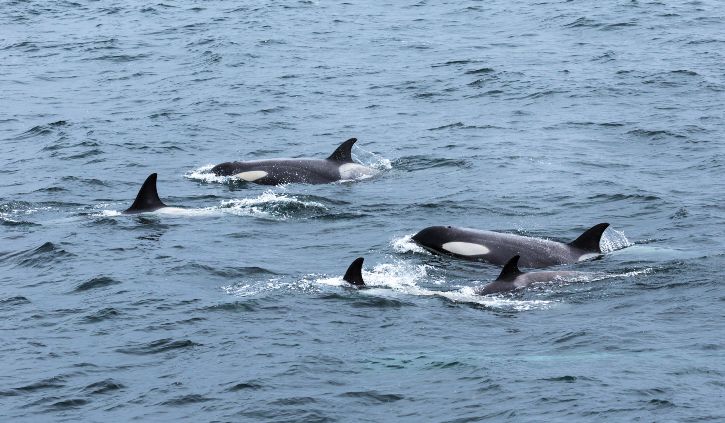
It’s almost impossible to describe the feeling of arriving in this storied, ice-bound sector of Antarctica. Stepping outside and taking a deep breath of some of the most fresh, crisp air on earth is an experience to cherish forever.
The Ross Sea region is a globally significant wildlife sanctuary. Its nutrient-rich waters support an astonishing array of uniquely adapted Antarctic species, including Ross Sea orcas, Antarctic petrels and South Pacific Weddell seals. It is also home to Antarctica’s largest Adélie penguin colony, and many of the largest emperor penguin colonies. The unique biodiversity of the Ross Sea has been protected within the world’s largest marine protected area since 2016.
The human heritage of the Ross Sea coast is equally impressive. Since James Clark Ross discovered the region in 1841, countless expeditions have built base camps on scattered ice-free slivers of land, using them as staging posts for bold forays across the polar plateau. Many of them departed in a hurry, leaving artefacts, scientific equipment and sometimes entire huts behind. Today these sites are preserved as open-air museums and protected under the Antarctic Treaty System.
Embrace the spirit of exploration as your expedition team designs your voyage from day to day, bringing decades of experience to selecting the ideal sites based on the prevailing weather, ice conditions and wildlife opportunities.
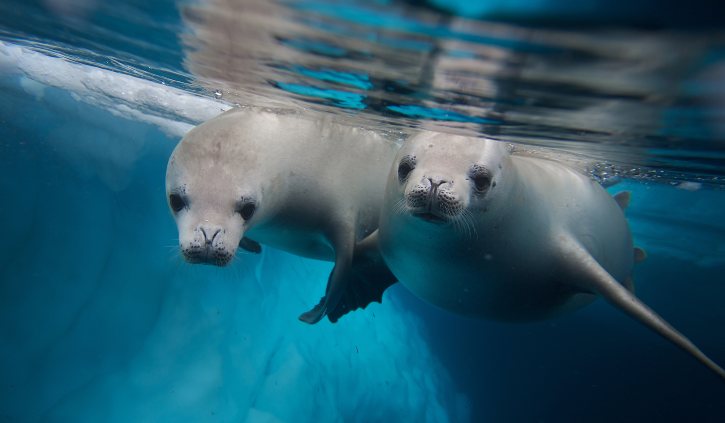
Leave the grandeur of the ice to the seals and penguins and head northwards, but your voyage is far from over. In the days ahead there is plenty of time to enjoy the magic of the Southern Ocean and the life that calls it home. You won’t want to miss presentations from your onboard specialists about the wonderful wildlife and rich human history of Macquarie Island.
These days at sea also offer time and space to reflect on the emotions and special moments you’ve lived over the past few weeks. You may like to take a moment of quiet contemplation or reminisce with your fellow travellers over a cuppa (or other beverage of choice!)
As you approach Macquarie Island keep watch for graceful grey-headed, black-browed and light-mantled albatross, which may venture from their nests to welcome their human visitors.
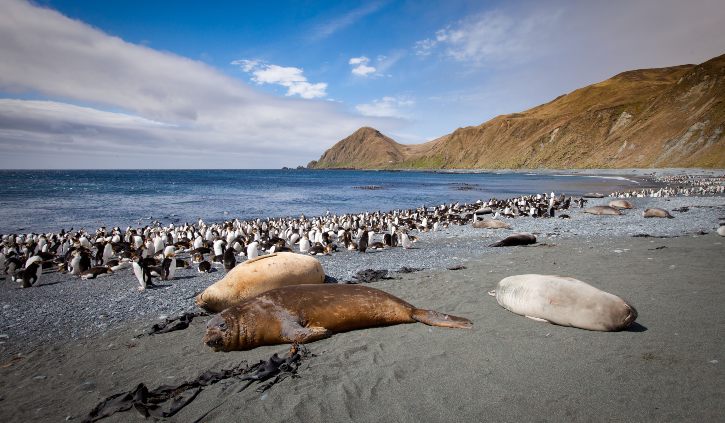
As they sailed towards Antarctica, Mawson and his men encountered ‘an exquisite scene’. Macquarie Island (known affectionately as Macca) rises steeply from the Southern Ocean in a series of emerald summits: a beautifully fierce, elemental landscape teeming with life.
Keep your binoculars handy because this subantarctic refuge is home to 3.5 million breeding seabirds, including no less than four species of penguin! Alongside boisterous colonies of tuxedoed kings, charming gentoos, robust rockhoppers and endemic royal penguins, you’ll find three types of fur seals and a large proportion of the world’s elephant seals. Layer up and head out on deck as you approach one of the largest concentrations of life in the Southern Ocean.
Remember to keep an eye out for Macca’s kelp forests—these remarkable underwater ecosystems are quite mesmerising as their fronds sway back and forth on the water’s surface.
In addition to being a globally recognised and protected wildlife refuge, Macquarie Island played an important role in Antarctic history. It was here, in 1911, that five men disembarked Mawson’s Aurora and established a radio relay station which would transmit the first communication from Antarctica to the outside world.
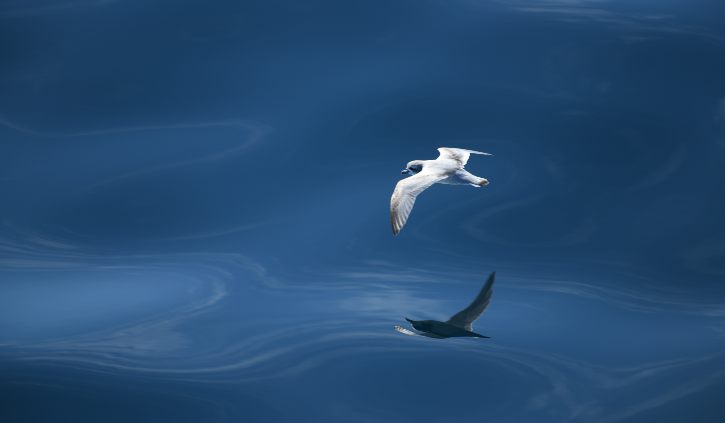
As your journey draws to a close, take some time to reflect on the experiences of the past few weeks. Perhaps take some time to organise your photos, jot some more notes in your journal or simply relax and soak up the ambiance on board as you farewell your travel mates . . . until next time!
We hope you become ambassadors for the great Southern Ocean, advocating for its conservation and preservation, and share your experiences with your loved ones, so they might visit and become ambassadors themselves.

After breakfast, farewell your expedition team and fellow passengers as we all continue our onward journeys, hopefully with a newfound sense of the immense power of nature.
To make the most of your time in South America we can tailor a holiday to Patagonia to suit your voyage dates. If you have a bit more time we can create a tailor-made itinerary to some of the highlights of South America. Take a look at the Patagonia sample itineraries below and contact us to begin creating your perfect holiday.
18 Days
4 Days
5 Days